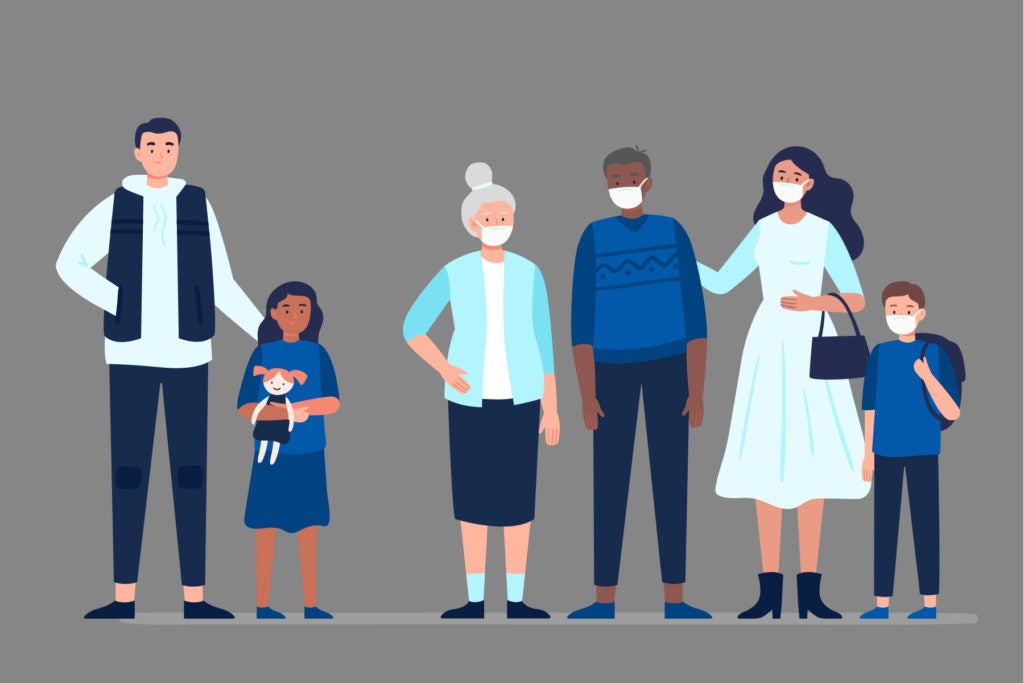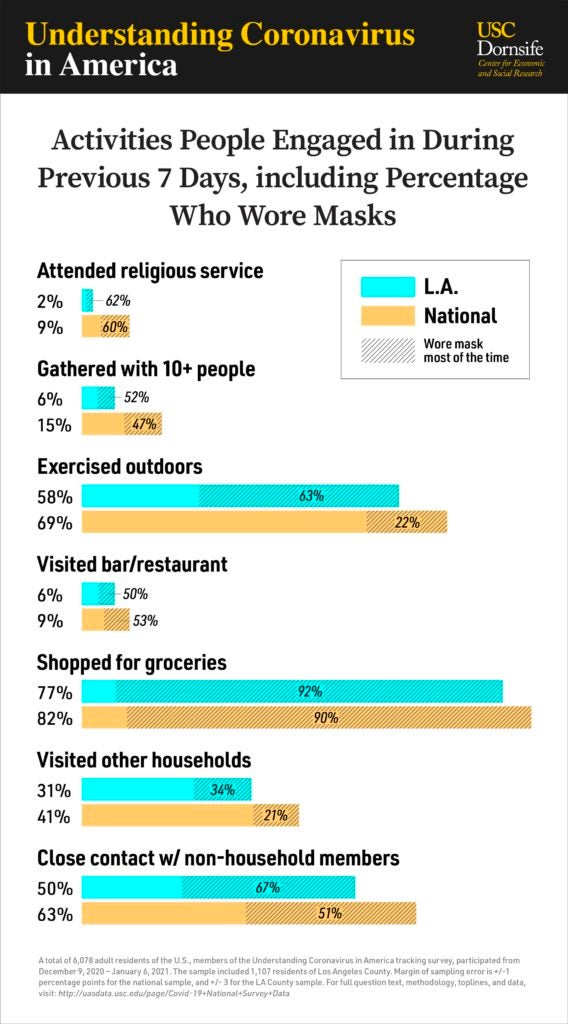Though a large majority of Americans believe wearing a mask is an effective way to protect themselves from COVID-19, many are still non-compliant — even while engaging in higher risk activities — according to new findings from the USC Dornsife Understanding Coronavirus in America Study.
Contact: Jim Key, (619) 253-1077 or jameskey@usc.edu or Jenesse Miller, (213) 810-8554 or jenessem@usc.edu
WHAT
New findings from the Understanding Coronavirus in America Study, measuring the percentage of people who recently engaged in activities that may put them at risk of infection with COVID-19 and the portion of them who were wearing protective face masks. Read the full report.
The ongoing study is conducted by the USC Dornsife Center for Economic and Social Research. This analysis is from survey data collected between March 10, 2020, and Jan. 6, 2021.
STUDY HIGHLIGHTS
Though 83% of U.S. adults view wearing a mask as an effective way to stay safe from COVID-19, their mask-wearing behavior is very inconsistent, even while they engage in higher risk activities. There are also large differences based on race and locale.
Two-thirds of Americans reported being in close contact (less than 6 feet) with people outside their household in early December, but only about half (51%) of them said they mostly or always wore a mask while doing so.
- White people were the least likely to consistently (“always” or “most of the time”) wear a mask (46%) while in close contact with people from other households, compared to Blacks (67%), Latinos (63%), and people of other races (65%).
- Only 42% of people in rural areas wore a mask always or most of the time while close to people outside their household, compared to 52% of people in suburban locales and 57% of people in urban locales.
Compared to the national average, Angelenos are much more likely to wear masks when in close contact with people from other households (67% vs. 52%) and when exercising outside (63% vs. 22%). They’re also less likely to come into close contact with people outside their household (50% vs. 63%).
- Four out of 10 Americans visited someone else’s home; only 21% of them wore a mask most or all of the time they were together.
- While 14% of Americans gathered in groups of 10 or more people, just 46% wore a mask most or all of the time they were together.
- The vast majority of Americans wore masks while grocery shopping, which was the most common activity reported. Of the 81% who shopped for groceries in early December, 90% wore a mask.
WHO
The ongoing Understanding Coronavirus in America Study is conducted by the Center for Economic and Social Research at the USC Dornsife College of Letters, Arts and Sciences. This analysis was conducted by researchers Jill Darling, Kyla Thomas, and Arie Kapteyn with valuable assistance from Natalie Theys and Alwyn Cassil.
“These findings indicate a need to redouble efforts to convey consistent messages about the overall importance of wearing masks, but more than that — where and when to wear them,” said Kapteyn, director of the USC Dornsife Center for Economic and Social Research. “Too many seem to lack a clear understanding of the risks posed by friends and family outside their immediate households.”
“Despite L.A.’s soaring infection rates, it is clear from our data that Angelenos are more willing to wear a mask than people in other parts of the country on average,” said Thomas, a sociologist with the USC Dornsife Center for Economic and Social Research. “Still, rates of mask-wearing are far from where they need to be in L.A. to slow the spread of the virus, especially among those who are young, white or socially active.”





